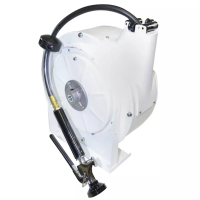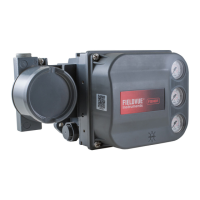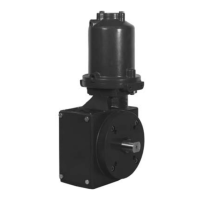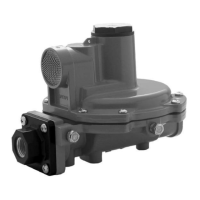5-22 Confrgoration
I”‘nE”“)
5.6.3.4
For FCODE 103 HIGH, LOW, and HIGH/HIGH options, the display
indicates a higher limit alarm by a flashing H or L to the left of the
displayed value.
A flashing H indicates a positive deviation alarm and a flashing L
indicates a negative alarm on the digital display.
The deviation alarms may be sent out via discrete output D03, for the
negative alarm and D04, for the positive alarm, if DO3 and DO4 are
not configured to carry PV monitoring status, PV alarm, or
setpoint-ramping information.
MidMax Analog Input Selector
As an alternative to PV monitoring, the minimum or maximum signal
can be selected between analog inputs All and Al3 using FCODE
116, Option 3 or 4.
5.6.4
I
All
A,3 ;JTiqpv
1 I
DPRQ00-031
The selected signal is used by the controller as the PV. The MinIMax
comparison is made
after
performing any signal processing functions
that have been enabled.
The Min/Max function uses only analog inputs All and Al3 and cannot
be used if the PV monitoring function is in use.
Function
FCODE Option No Default
Selected
V&Je WlJe
PV 116 Disabled 0 0
Monitoring.
PV/RSP Min selection All/Al3 PV
3
V&e
Max selection All/Al3 PV 4
Selection
Signal Selector - Analog Output 2 (A02)
The user may configure the controller to send a specific internal value
out on A02 using FCODE 114. This output is scaled exactly the same
as the PV/SP bargraph displays. Option 2 of FCODE 114 refers to the
actual setpoint active in the controller. Option 3 is only local setpoint,
regardless of the installed configuration. Option 4 is the RSP value
after Ratio (FCODE 1) and Bias (FCODE 2) have been applied, when
those options are configured. Option 5 is the internal output signal.
UM6.1:DPR900:9102
May 1991
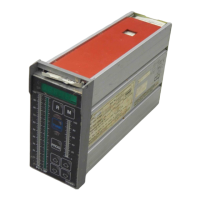
